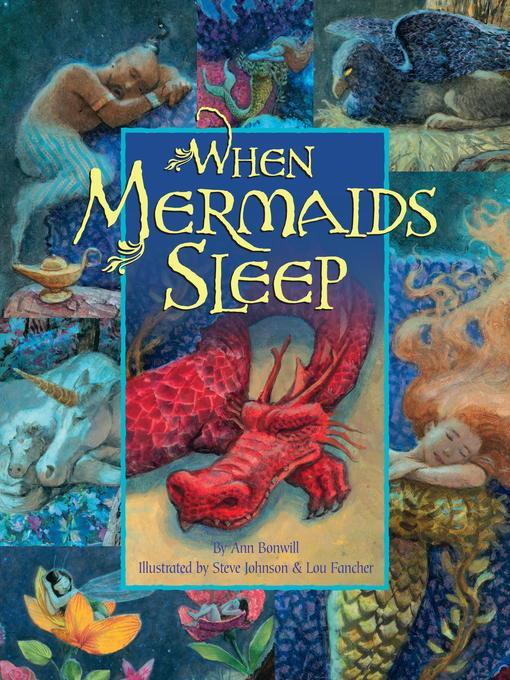
When Mermaids Sleep
فرمت کتاب
ebook
تاریخ انتشار
2013
Reading Level
2-3
ATOS
3.9
Interest Level
K-3(LG)
نویسنده
Ann Bonwillشابک
9780375980961
کتاب های مرتبط
- اطلاعات
- نقد و بررسی
- دیدگاه کاربران
نقد و بررسی

March 18, 2013
In a distinctive twist on the going-to-bed theme, Bonwill (I Don’t Want to be a Pea!) promises that the creatures of fairy tales and storybooks go to sleep just as children do. The verse holds few surprises, but it’s sturdy and evocative: “When mermaids sleep in oceans deep/ inside their coral caves,/ they lay their heads on seaweed beds,/ rocked softly by the waves,” she begins, as Johnson and Fancher (One Frozen Lake) offer a spread of two mermaids slumbering on a bed of coral, splashed with vivid pinks, limes, and lavenders that pop against the midnight blue of the ocean. Further on, pirates sleep against the gunwales of their ship, a mother and baby unicorn doze in a forest carpeted with light blue and pink leaves, and faeries sleep curled up in flower blossoms, bathed in moonlight. Sound asleep, Johnson and Fancher’s characters don’t engage readers; instead, they signal “don’t disturb.” Readers who intrude on them may feel the best thing to do is to turn the page and tiptoe on. Ages 3–5. Author’s agent: Marietta Zacker, Nancy Gallt Literary Agency.

April 1, 2013
Rhythmic lines will lull youngsters who are fully immersed in fairy-tale lore into a dreamy state. The verse provides the progression, occasionally a stretch, from spread to spread. The waves that rock the mermaids also carry ships on which pirates sleep on trunks. These trunks contain treasures dug from sand. The castle is made of sand, and this is where wizards watch the night sky, and so on until readers encounter the sleeping child, whose ordinary room is seemingly touched by magic as a curl of stardust drifts in through the open window. Images of typically frightening creatures such as giants and goblins slumbering may remind children to put their problems to bed, that nothing can harm them, although younger, less sophisticated tots may find them a tad disturbing. These spreads are interspersed with scenes of the more expected and enchanting denizens of fairyland: The mermaids gently rock on seaweed beds, unicorns rest on pillows of leaves, and fairies are comfortably cupped in flowers underneath the moon--the same moon that shines into the child's room. Lush, jewel-tone illustrations feature rich patterns and are as luminous as if they too are touched by moonlight. Youngsters are sure to carry these images into their dreams. (Picture book. 3-6)
COPYRIGHT(2013) Kirkus Reviews, ALL RIGHTS RESERVED.

April 1, 2013
K-Gr 2-Mermaids are sleeping in coral caves and, in that same water, pirates are snoring in their ship. In the trunks below deck, genies dream on sand in their lamps; that sand was also used to build sand castles where sea serpents sleep. The magical world is at rest: unicorns, giants, goblins, and dwarves. Readers discover that under the same moon where fairies are slumbering is a dreaming child. In this bedtime story, it is the illustrations that shine. The palette, while muted, is still lush and full. Collage is used to great effect to create texture; readers will be tempted to run their hands over the pages, hoping to feel the mountains and trees themselves. The full-bleed artwork spreads over two pages; one can almost imagine that the world extends past the confines of the layout. The dreamlike fantasy world is captured expertly. Unfortunately, the text is not as successful; the rhyming pattern is singsongy and the lines are often forced. They combine to make a challenging read-aloud; it is easy to trip over the words and the story becomes muddled and confusing. With stunning artwork like this, it is a shame that the text isn't stronger.-Laura Lutz, Pratt Institute, New York City
Copyright 2013 School Library Journal, LLC Used with permission.

























دیدگاه کاربران